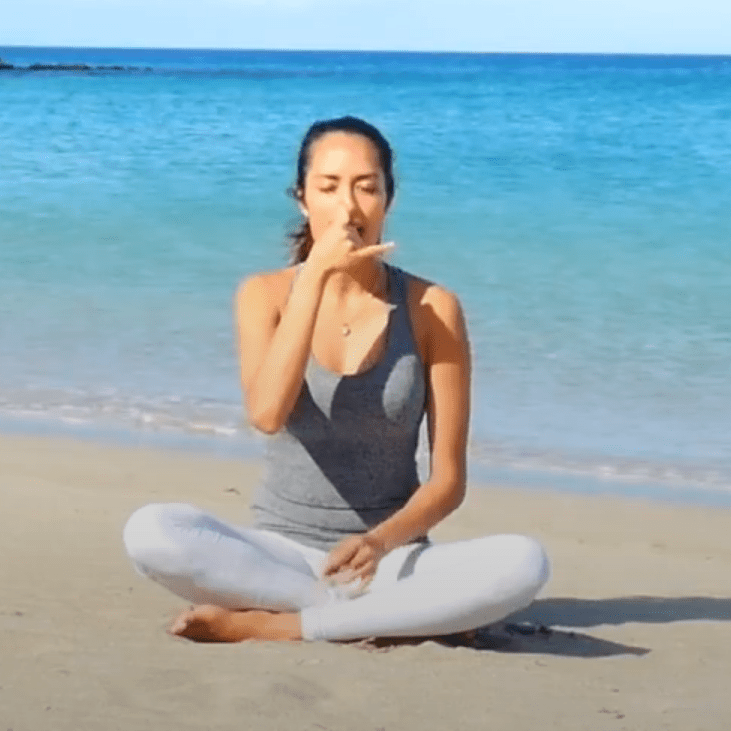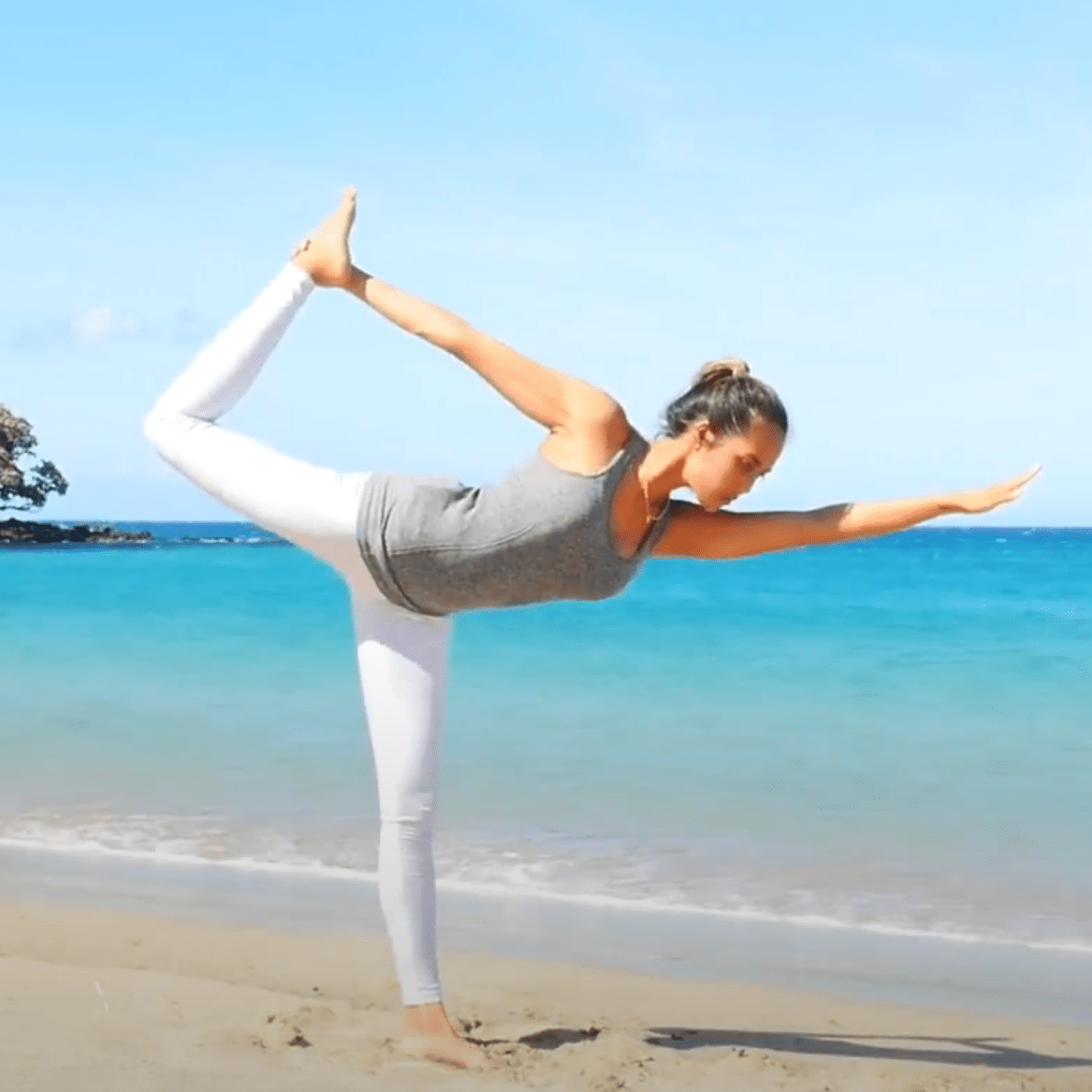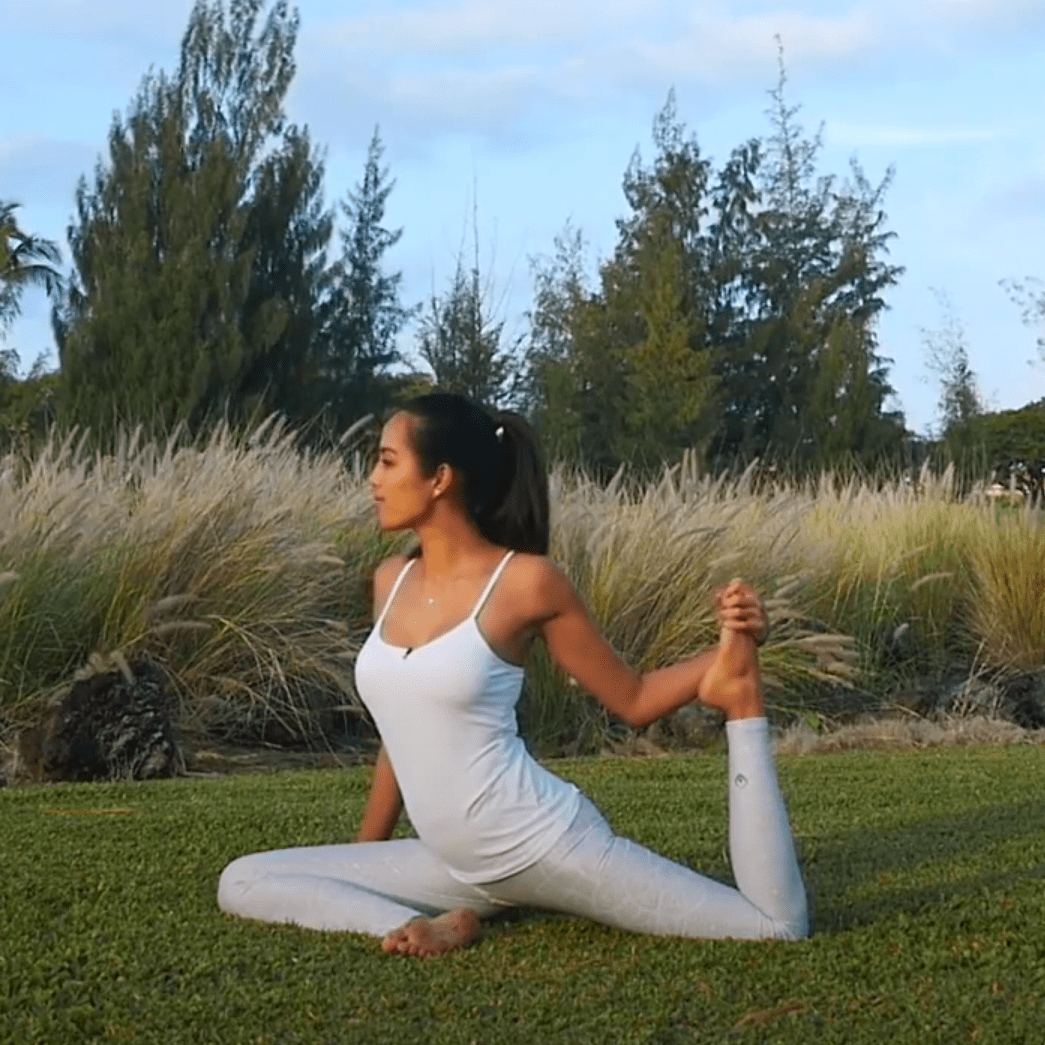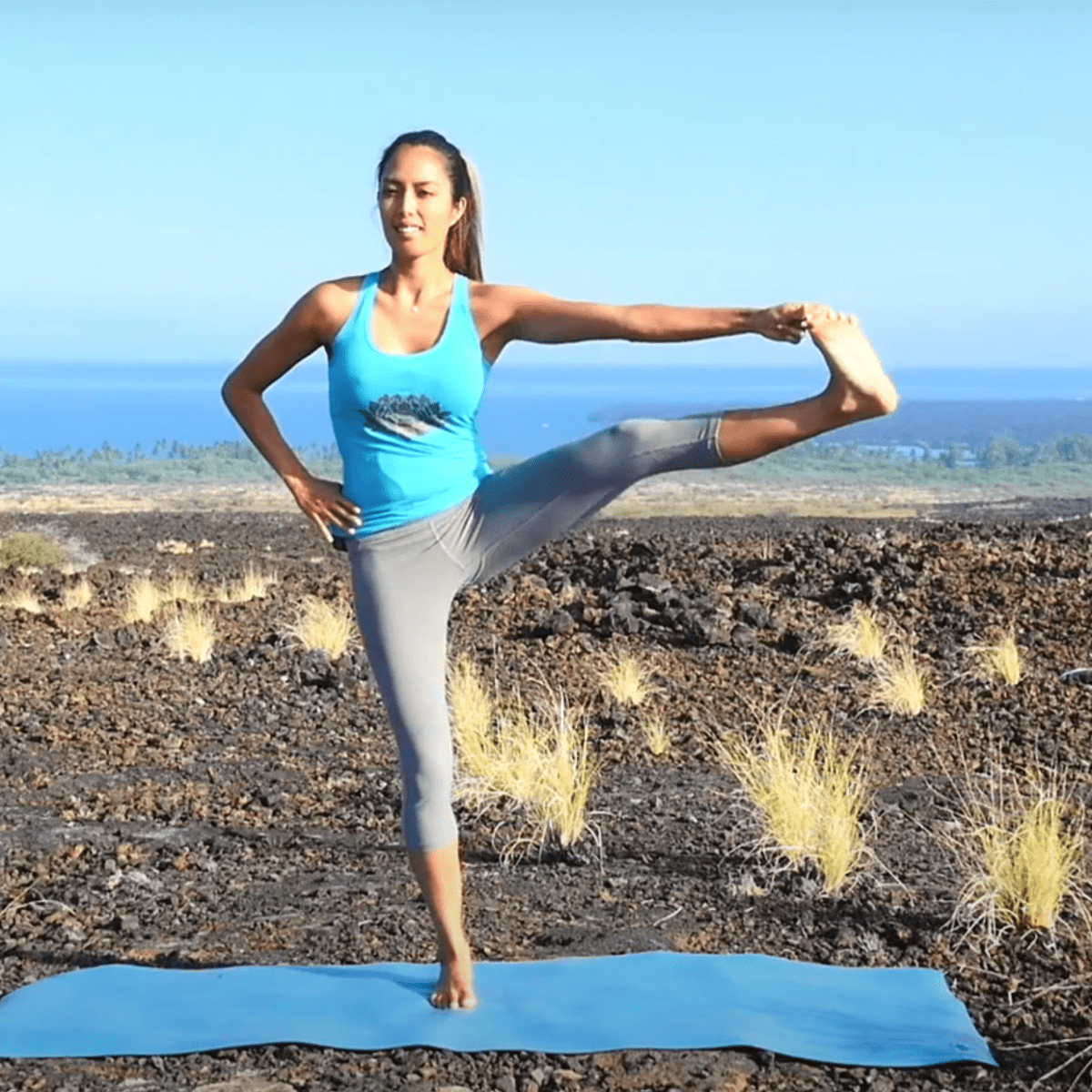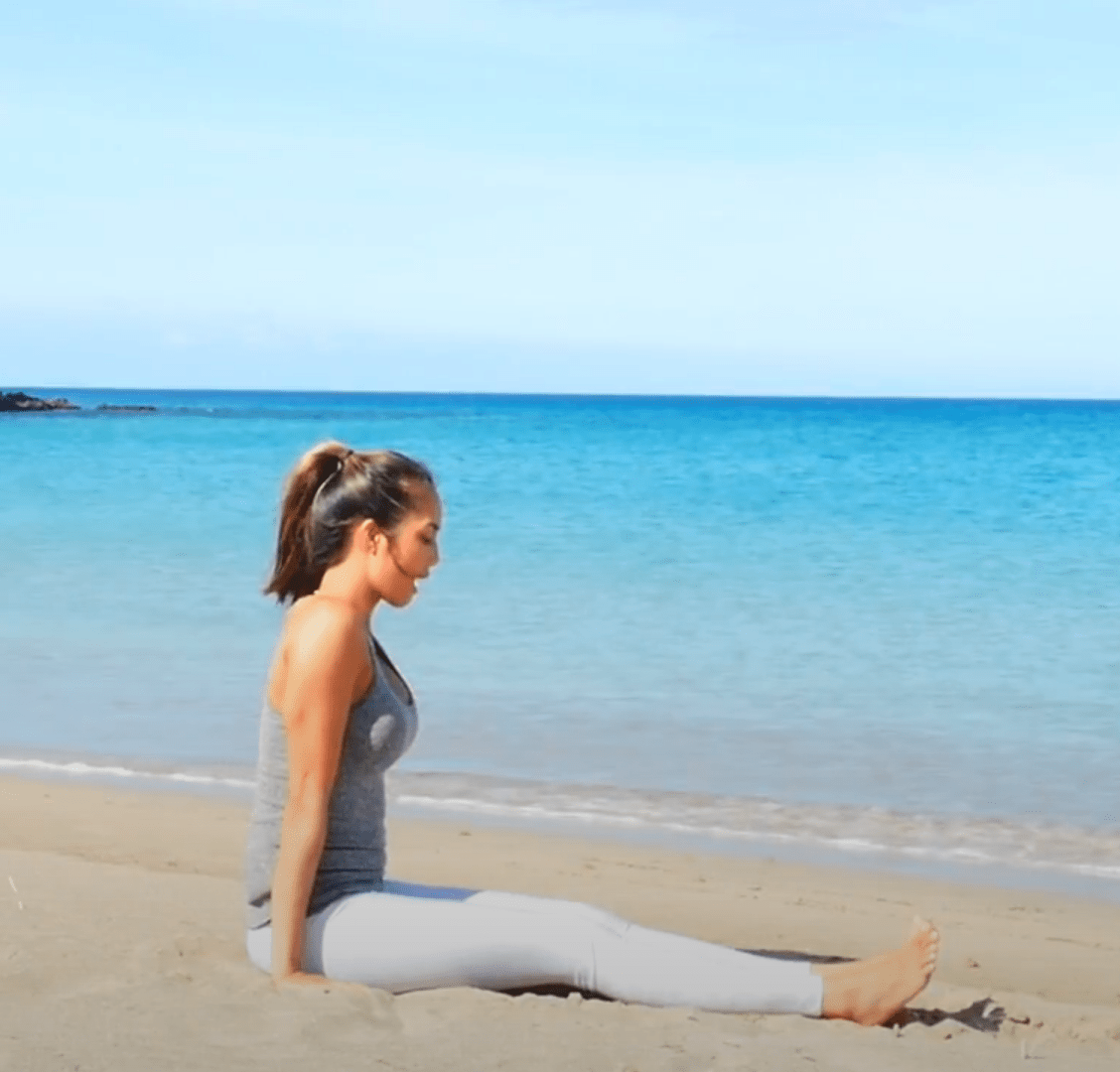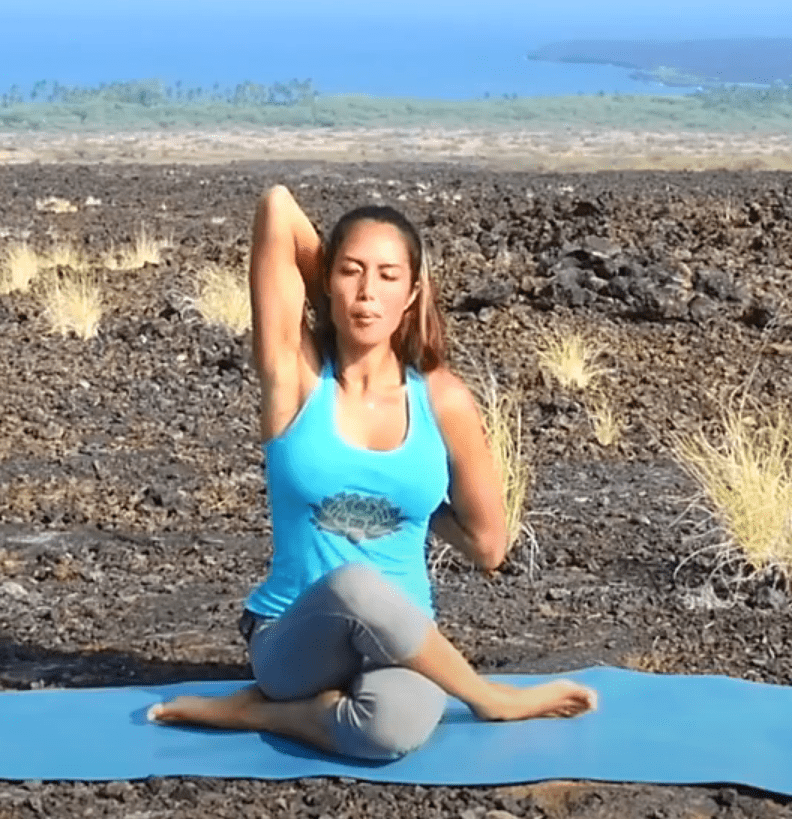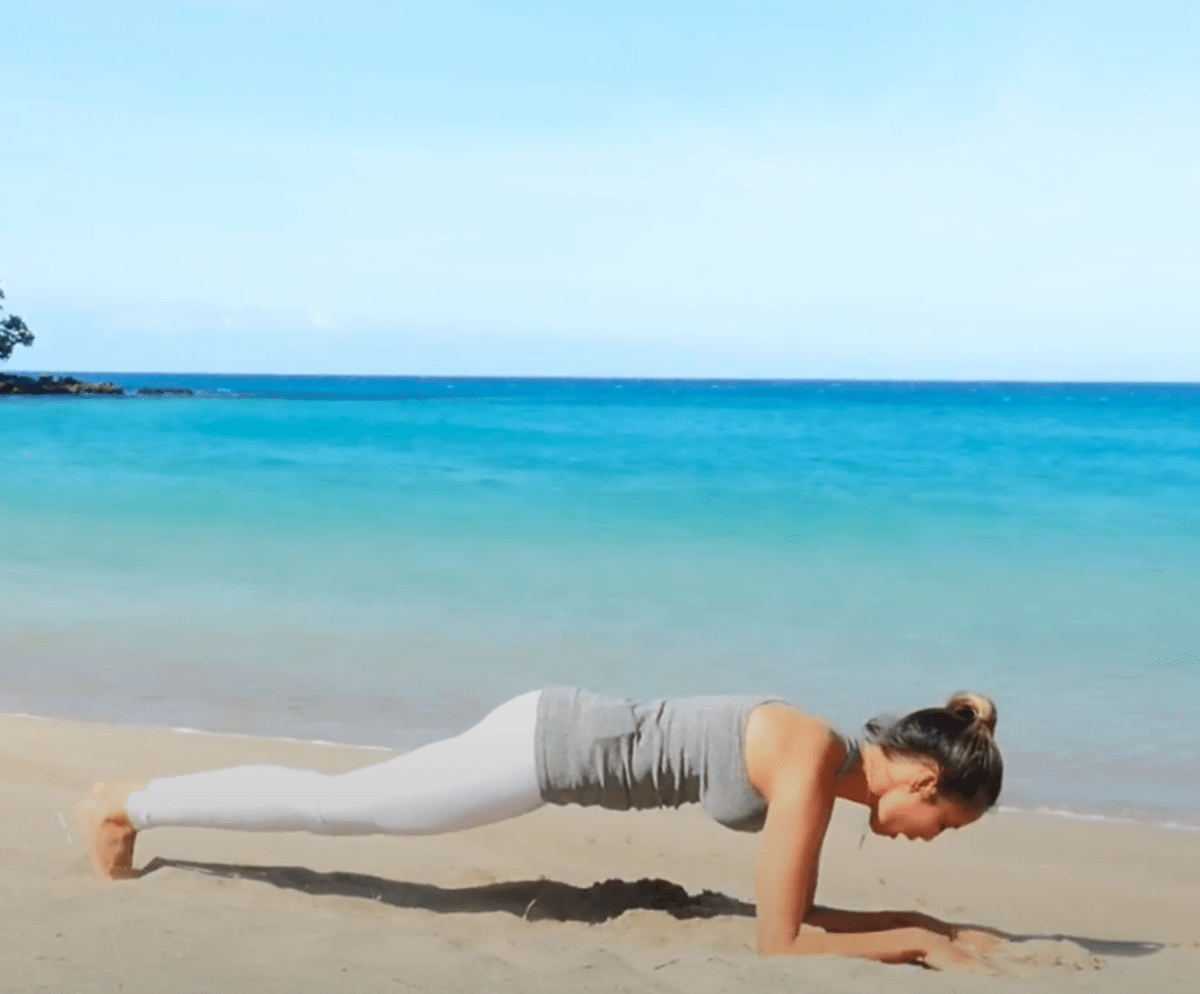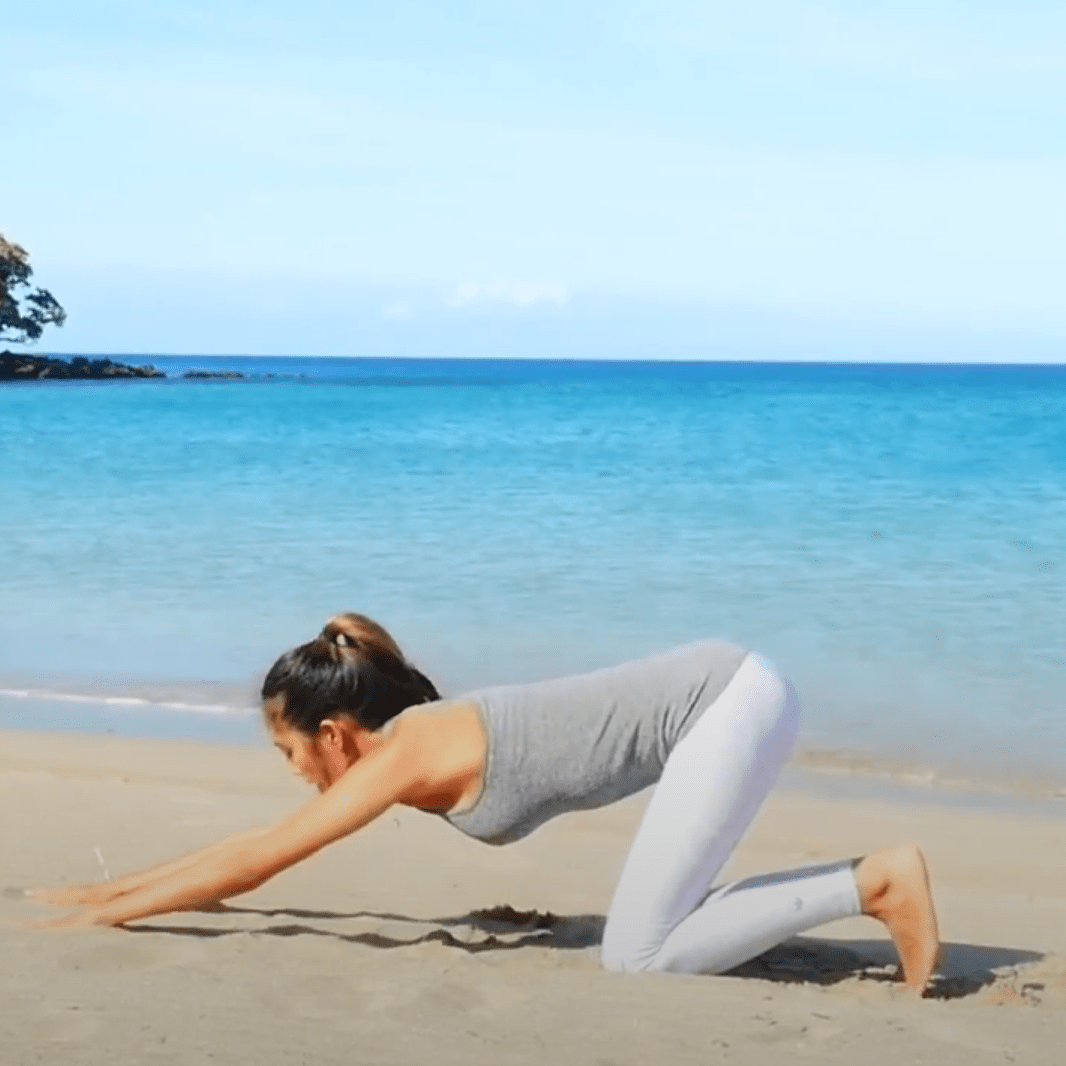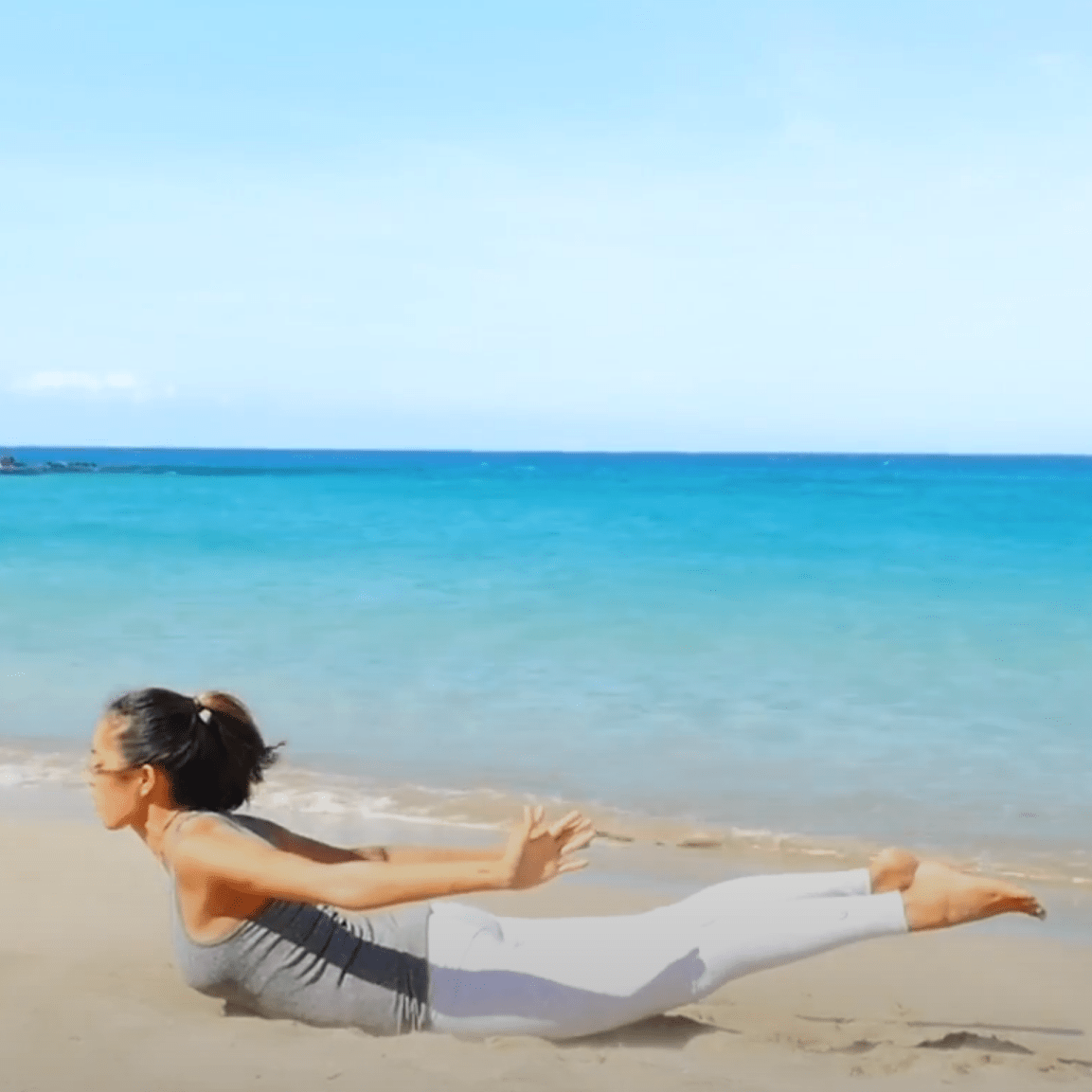Reading Time: < 1 minute Nadi Shodhana commonly referred to as alternate nostril breathing, is a simple but highly effective practice that cultivates a feeling of centered calm in the mind and body. It is clinically shown to have a beneficial effect on several cardiovascular parameters, harmonize the hemispheres of the brain, as well as the nervous system.
Guided Yoga – Head to knee forward bend and Lord of the dance pose
Reading Time: 3 minutes Head-to-Knee Pose (Janu Sirsasana) is an excellent stretch to relieve tight hamstrings, the muscles in the back of your thighs. If you tend to dislike doing a seated forward bend with both legs straight, this pose may come as a pleasant surprise. Taking your stretch one leg at a time allows you to go a lot deeper and feels so much better.
Natarajasana is an advanced balance pose that brings grace, peace of mind, and clarity. The pose is additionally a deep backbend that requires great strength in the entire front line of the body. The Front Line of the body extends from the quadriceps, through the hips, abdominals, chest, and even the front of the throat.
Guided Yoga: Pigeon and Thread the Needle Pose
Reading Time: 3 minutes Pigeon Pose is a hip opener forward bend. It stretches the entire lower part of the body, stimulates the abdominal organs and helps relieve the body of Sciatica.
Thread the Needle pose (Sucirandhrasana), also known as Eye of the Needle or Figure 4 pose, is much less intense than Pigeon pose, but just as effective for opening the hips, and safer for those with any limitations such as knee or hip issues.
Guided Yoga – Bharadwaja’s Twist and Big Toe Pose
Reading Time: 2 minutes Bharadwaja’s Twist and Big Toe Pose strengthen the legs and ankles, stretch the backs of the legs, and improve balance. Try these poses with Guided Yoga from YouVeda.
Guided Yoga: Bridge Pose and Cat Pose
Reading Time: 2 minutes The Bridge Pose is a beginning backbend that helps to open the chest and stretch the thighs.
Cat pose is often paired with Cow Pose for a gentle warm-up sequence. When practiced together, the poses help to stretch the body and prepare it for other activities.
Guided Yoga – Cow Pose and Chair Pose
Reading Time: 2 minutes A seated yoga posture, Gomukhasana can be performed along with a set of different seated asanas. It helps stretch the arms, triceps, shoulders, and chest. Requiring the practitioner to sit erectly, it also enhances one’s posture.
Sitting in a chair may sound very easy and comfortable. But sitting in an imaginary chair might be a little challenging! And this is exactly what we do in Utkatasana or Chair Pose. The literal meaning of Utkatasana is an intense posture or a powerful posture.
Guided Yoga: Dolphin and Dolphin Plank Poses
Reading Time: 2 minutes Dolphin pose strengthens the core, arms, and legs, while also nicely opening the shoulders.
Dolphin Plank Pose is an intermediate level rejuvenating yoga posture that helps tones the abdominal muscles. It is a variation of the Dolphin Pose.
Guided Yoga: Downward Dog and Extended Puppy Pose
Reading Time: 2 minutes Downward Dog and Extended Puppy Pose help in stretching your spine and shoulders. Try these poses with Guided Yoga from YouVeda.
Guided Yoga: Half Lord of the Fishes and Locust Pose
Reading Time: 2 minutes A good antidote for too much sitting and symptoms that come with overusing technology, half lord of the fishes pose has the ability to increase energy in the body while also stoking the digestive fire in your belly.
Salabhasana or Locust Pose effectively preps beginners for deeper backbends, strengthening the back of the torso, legs, and arms.
Guided Yoga: Marichi’s Pose and Staff Pose
Reading Time: 2 minutes Marichi’s Pose is a fantastic stretch for the shoulder since it creates traction in the shoulder joint. You can either fold forward or twist back to deepen the shoulder opening
Staff Pose or Dandasana is the basic plank posture. The name comes from the Sanskrit word danda which means “stick” or “staff” and asana which means “posture” or “seat.”

